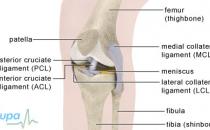Exercise more and live longer, study says

An inactive lifestyle increases your risk of developing long-term (chronic) diseases, such as coronary heart disease, type 2 diabetes and some types of cancer, as well as shortens your life, according to a study published in the journal The Lancet.
Dr Sneh Khemka, Director of Healthcare Development, Bupa, commented: “As a season of great sporting events continues, you’d think exercise would be on many people’s minds. However, it’s likely that a good percentage of us aren’t fulfilling the recommended amount of exercise we should be doing. While we may be happy to sit and watch sport from the comfort of the sofa, this research has revealed some worrying figures about the effects of an inactive lifestyle.
“The researchers suggested that a lack of physical activity contributes to a range of health conditions, which, worldwide, cause 9 percent of premature deaths each year– this figure is similar to the number of deaths caused by smoking. In short, these findings no doubt show that physical inactivity is a global risk factor for non-communicable diseases – conditions that are mainly caused by an unhealthy lifestyle. The researchers estimated that if all inactive people began exercising, 5.3 million deaths could be prevented each year. Or, if inactivity decreased by 10 to 25 percent, instead of complete elimination, 1.3 million deaths could be avoided annually.
“We all know we should exercise regularly – and most of us are well aware of the endless health benefits of being active. To name just a few - regular, moderate exercise can help prevent heart disease, stroke, some cancers and helps you maintain a healthy weight and sense of mental wellbeing. But, despite these gains, much of the world’s population remains inactive. The researchers suggest that reporting the harms of physical inactivity instead of the benefits of exercise may have a bigger impact.
“Bupa’s recent International Health Pulse Survey also revealed some alarming facts about people’s perception of their health. For example, 21 percent of the UK population are obese, which is a major risk factor for type 2 diabetes. Furthermore, the survey found that nearly half (46 percent) of obese people consider themselves to be healthy.
“Perhaps we need to focus on how people can build activity and exercise into their daily lives. The World Health Organization recommends we do 150 minutes of exercise every week. To achieve this, it doesn’t necessarily mean gruelling sessions at the gym or running a marathon – simple changes, such as brisk walking, gardening or playing with your kids in the garden, are all good starting points. Any chance you have to be active, for example, leaving the car at home if you can walk or cycle, or taking the stairs instead of the lift, are small but significant additions to your overall activity throughout the day. The vital message here is simply to get moving and keep moving throughout life.”
The researchers collected data using questionnaires to find out about physical activity levels in each country. However, it’s important to bear in mind that self reporting is often inaccurate. It’s also not clear how physical activity was defined – whether it included exercise just for leisure or if it also included activities related to work, transport or housework. The researchers acknowledged that the methods used to estimate activity levels varied from country to country, and may not provide a consistent and accurate picture of physical activity across the world.
Produced in collaboration with Bupa’s Health Information Team, July 2012.
Key facts
Non-communicable diseases (NCDs)
- Non-communicable diseases (NCDs) are conditions that aren’t caused by infection (passed from person to person). They are long-term (chronic) and progress slowly.
- The four main types of NCDs are cardiovascular diseases, such as stroke and heart attack, respiratory conditions, such as chronic obstructive pulmonary disease and asthma, cancer and type 2 diabetes.
- The main risk factors for NCDs are physical inactivity, smoking, excessive alcohol intake and an unhealthy diet.
Physical activity guidelines
- You should aim to do some physical activity every day. The recommended healthy level of physical activity is 150 minutes (two and a half hours) of moderate exercise over a week in bouts of 10 minutes or more. You can do this by carrying out 30 minutes on at least five days each week. Alternatively, you can do 75 minutes of vigorous intensity activity.
- It’s important that you include at least two weekly activities to build up muscle strength, such as exercising with weights. Try to spend as little time as possible being inactive.
Related hubs
- Fitness and exercise
Related topics
- Benefits of exercise
- Exercise – getting started
- Exercise for older people
- Types of exercise















